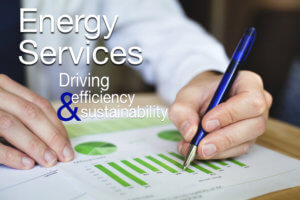
Have you ever stood in the batter’s box and watched a fastball go right down the middle without taking the bat off your shoulder to take a swing? This has to be one of the most frustrating things in baseball from a hitter’s point of view. Taking the fastball down the middle even with no strikes can be detrimental as it puts you behind in the count, and the pitcher can begin to expand and nibble on the corners as well as mixing up his pitches and speeds.
This is very similar to not acting swiftly on financially viable energy conservation measures (ECMs) in buildings. For example, what if I decided not to implement a number of ECMs that may cost $500,000 and will save at least $125,000 annually? Each year I wait to implement these solutions, I am essentially throwing $125,000 out the door on unnecessary operating expenses or adding $125,000 to the cost of the project. What if what would have been a $500,000 project becomes $1,500,000 because of deferred maintenance or an unexpected failure due to my lack of action? While the $500,000 may be hard to swallow at first, I would certainly stand to benefit in the long run by acting swiftly.
In our industry, too many times we are solely focused on “simple payback,” and we forget to look at the big picture. What are often lost in the shuffle are the other financial benefits from saving energy and reducing operating costs. For instance, let’s assume in the example above that I own a gross leased multi-tenant commercial office building where the savings accrue to me and go straight to my bottom line. If I were to implement these ECMs in Year 1 for $500,000 and began saving $125,000 in operating expenses, this would ultimately increase my Net Operating Income $125,000. Let’s then assume I wanted to sell the building at the end of Year 3 at a 7.5% cap rate. The increased value of my building from these ECMs is $1,666,666, which is far greater than the $500,000 I invested.
|
Initial Investment: $500,000 |
||
| YEAR 1 |
$125,000 savings |
|
| YEAR 2 |
$125,000 savings |
|
| YEAR 3 |
$125,000 savings |
|
| SALE |
$1.6 mil. in increased revenue |
|
|
Internal Rate of Return: 67.56% |
||
The good news with buildings is that the “three strikes, you’re out” rule doesn’t apply—there’s always time for improvement. The bad news, however, is that we still have to hit those nasty sliders or split finger fastballs that our buildings throw at us if we don’t stay ahead in the count and on top of our equipment.
Have a question for our experts? Leave your comment below, check out our Energy Services page or contact our team directly at energy.services@mckenneys.com.




